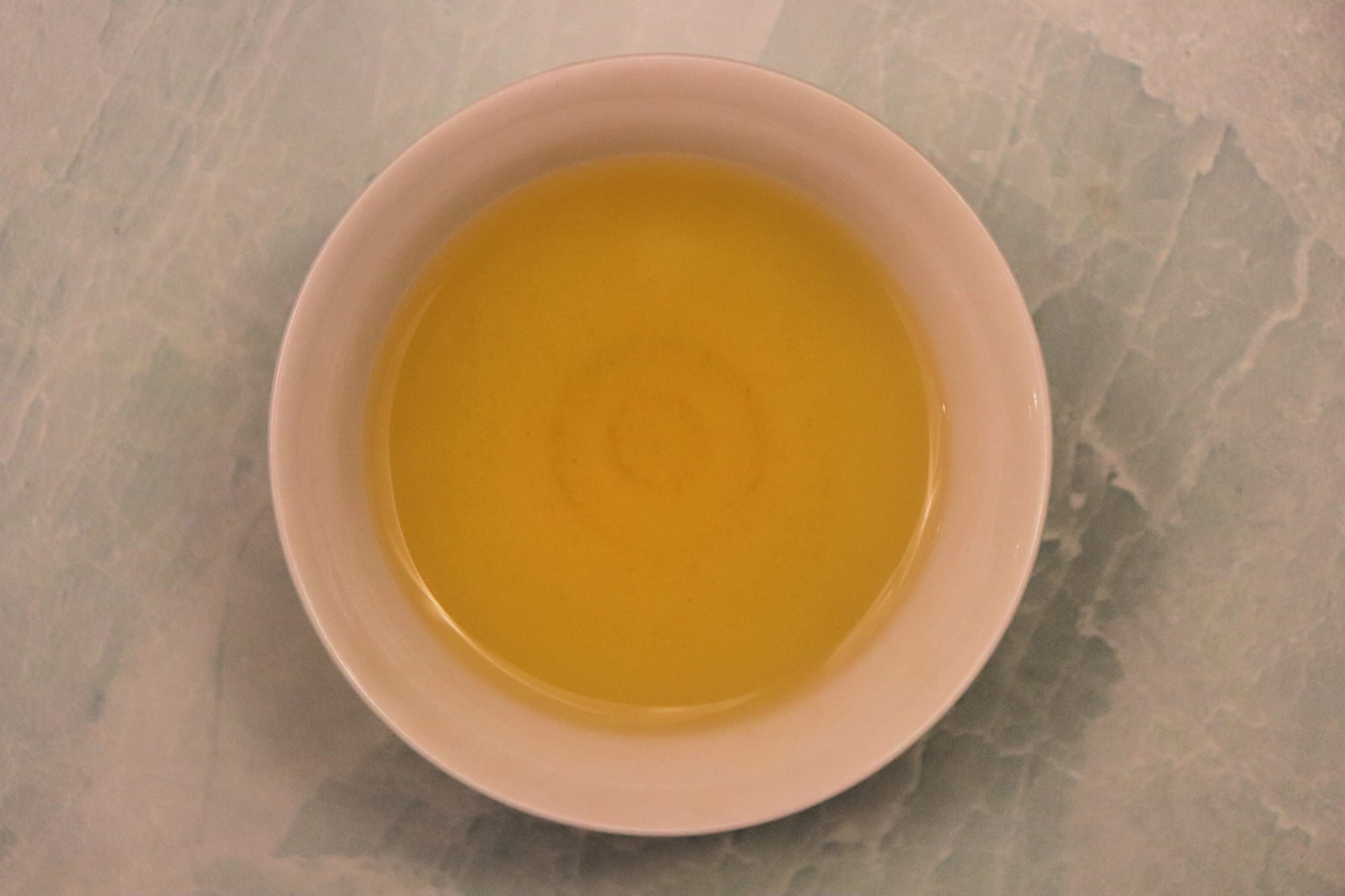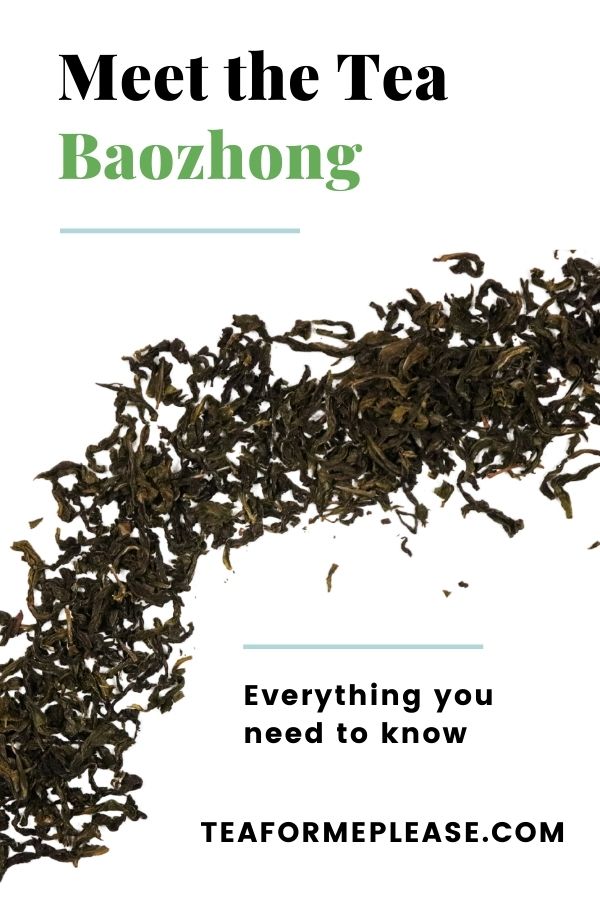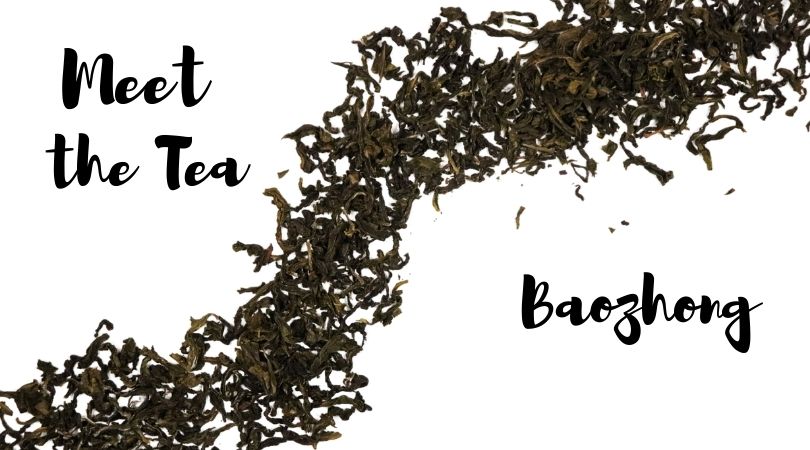Baozhong is one of the most lightly oxidized oolong varieties, ranging from about 8 to 18%. The leaves are very green in color, and the taste is so light and fresh that you might think it was a green tea! Pouchong is another name you will see used for this tea. It is from an older method of transliteration that is no longer used. I encourage tea companies to use modern Pinyin whenever possible for this reason.
Its name is usually translated as “the wrapped kind,” which refers to the paper packaging used in the past. The leaves were packed in squares of paper rather than into a tin or a box. Each packet contained about 150g of tea. Since this packaging was not air-tight, the tea would continue to slowly oxidize over time.
Aged Baozhong is highly prized and can get quite pricey. They are usually reroasted periodically, so the taste is quite different from a newer production.


How It’s Made
Baozhong is usually made with the Qing Xing or Jin Xuan cultivars. After harvesting, the leaves withered in the sun to reduce the water content. This can be done indoors, outdoors, or a combination of both. The leaves may be lightly tossed to enhance oxidation but this process is much more gentle than what you might see with other types of oolong.
Once the desired level of oxidation has been reached, the leaves are tumbled inside a large oven. This step acts as the kill green, effectively bringing oxidation to a stop. A machine then rolls the leaves to damage the cell walls and release the juices from inside. Compounds developed during this step give tea many of the aromas that we experience in the cup.
After rolling is completed, the leaves are placed into a different oven as a final drying step. Unlike most other Taiwanese teas, the leaves are not shaped into tight balls. Traditional processing does not involve a roasting step, but roasted varieties can now be found.
Where It’s From
This oolong tea is synonymous with Taiwan today, but this tea style actually originated in Fujian, China. The production method was brought to Taiwan in the late 1800s. Pinglin and Wenshan produce most of Taiwan’s Baozhong. It is also made in Nangang, but it not nearly as common. These regions are not very mountainous, so the tea is usually grown under 900m in elevation.
What It Tastes Like
Baozhong brews up a brilliant greenish gold. Since it is lightly oxidized, you can expect a fresh and floral taste. Buttery vegetal notes balance intense floral aromas of orchid and lilac. Although this tea type is very “green,” the taste is still fairly mild compared to other greener oolongs. There is minimal astringency and a silky smooth mouthfeel, but it can have a refreshing tang in the finish. If you enjoy flower-scented green teas like jasmine, this would definitely be a good tea to try.

How to Brew It
Baozhong’s gentle nature makes it fairly flexible when it comes to brewing. I have found that it performs equally well using both gongfu and western methods. Some vendors recommend using cooler water, but I’ve seen instructions ranging from 180 to 205°F.
A general rule of thumb is 1-2 teaspoons (or 2.5-5g) of leaves for every 8 oz of water. If you are brewing in a large teapot or mug, your infusion time should be between 2 and 5 minutes. For gaiwans or clay teapots, I usually fill the vessel about 3/4 of the way full. My infusion times will start at 20 or 30 seconds, gradually increasing as I go.
The leaves are quite fluffy, so you may want to weigh them out instead of using a teaspoon for measuring. Don’t be afraid to experiment and play around with your brewing parameters. It’s important to keep in mind that there is no such thing as a right or wrong way to make tea. All that matters is that you enjoy it.


The tea that I photographed for this post was Wenshan Baozhong Tea from Eco-Cha.
Do you enjoy Baozhong oolong? Is there another tea that you would like to see featured on Meet the Tea? Tell me your thoughts in the comments below!
Further Reading
All About (Taiwanese) Baozhong
The process of Wenshan Baozhong tea
Pin It For Later!


Don´t mistake this tea with another named Bao Hong (“Vast Treasure”), that is a green tea from Yunnan. When i was reading this post i though it was about the green tea, and it sounded strange to me when refered like a oolong tea 🙂